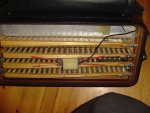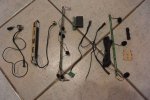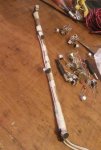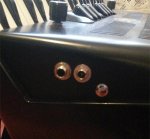jozz post_id=54876 time=1517337745 user_id=2600 said:
JerryPH post_id=54874 time=1517331362 user_id=1475 said:
You cannot use the old wiring. The 8+3 system requires a battery thst the old system does not support.
I dont doubt you but why is this? The Limex manual says its fed by a 9v 600mah power adapter so a normal 9v alkaline (550mah I guess) wont work? Ok that would be reason enough to forget about it.
If both systems are powered by the 9 volt battery, and you know what you are doing it might be done. That 6-wire setup, though, has me wondering. I am sure the Sennheiser is wired differently. Also, the wiring might be routed differently, you wouldnt want to direct 9 volts of power to a ground wire, or worse, route 9 volts to a mics input, if it is not designed to accept that level. Also, the internal amps (yes, there is a circuit that not only powers the mics, but you need a small amp that boosts the signal), if that is wired wrong, you get to blow another aspect of it. Also, the circuitry from one may not be designed or output optimally for the other, so its about a bit more than just those 6 wires.
Lots of ifs and maybes, but you really need to be 100% sure what connects to what, and if you are not, dont play with it, its not worth damaging either one. Basically, all I am saying Jozz, is be honest about your skill set. Either you know what you are doing, or not. Guessing and playing is probably going to cost you some damage otherwise. If you are confident in your knowledge and skills in electronics, you very likely will be able to do what you want.
A little more about my own mono Hohner setup. I was playing around and looking for a way that I could keep the same wiring as my Hohner Morino and factory setup. Well, I soon learned that electret mics have magnets inside that let them do their job, unfortunately, these magnets have a lifespan (a couple of decades is what I read), but that lifespan has long passed on my factory Hohner mics and so they are dead. I simply replaced them with capsules from dynamic mics, however, the output of those mics are very low, and so I bought an external preamp, and that worked quite well... but the capsules that I used were from really cheap mics that I had lying around doing nothing and so were good for voice, but not all that much for an accordion. If I had wanted to spend $100-$200 for a good capsule from a dynamic mic, I am sure it would sound surprisingly good, but again, no stereo image.
However, that said, I made a recording from them, and did a small test. My goal was to play a set of chords on the accordion and see if the volume from the bass (that was moving away as I pulled the bellows apart) would drop down drastically, as Heinz Aumüller suggested to me. So I made a recording, trying very hard to maintain a stable volume from fully closed to fully open and did this several times. Yes, there was a difference between full open and full closed, but it was less than 3 db measured on the sound meter of my phone when the recording was played back over speakers. Almost inaudible and again, unless you are a professional recording artist, wont affect you. Another myth kind of busted, because that bellows makes a very efficient place to bounce sound all around in.
I am convinced that I could, if I wanted, build a system that is almost as good as the Heinz Aumüller system for *way* less than he charges. However, I think that for me, I found the perfect answer for my needs (my needs are for home recording, in a controlled environment with a separate left-right stereo image and great sound quality, NOT live performances). As I said... more to come on this soon.

Great topic!






